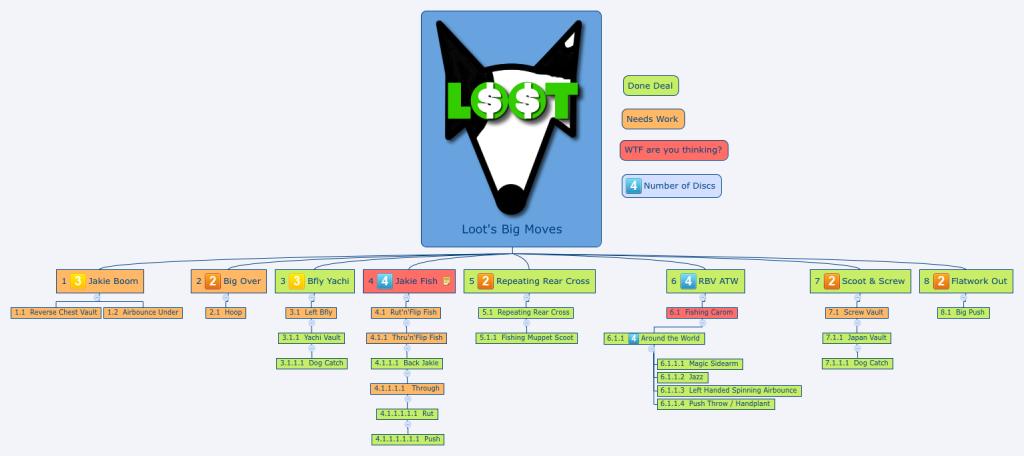
Loot Rewind – Back Chaining a Disc Dog Routine
Routines can be looked at as a super long sequence of tricks, or they can be broken down into Disc Dog Sequences. Building routines out of sequences means a more manageable number of working parts and a creates ready made framework for practice and perfection of the routine.
Whether you have created your sequences via Jam in a Flash or if you are working from your own personal stash of custom sequences, putting them together into a routine can be a daunting task.
One way to simplify assembling the routine is to backchain it. Start with the last sequence and then add a sequence before it. Backchaining helps you and your dog fall into a successful finish. Get the skinny below…
Backchaining vs Front Chaining
Front Front is a stable position directly in front of the handler. Front is an traditional obedience skill. Usually your dog sits in this position, but standing is often acceptable as well, especially in... More chaining a behavior, building it one step at a time looks like a staircase made of blocks. Each new block has to be positioned and balanced, often on other blocks. The higher up the staircase you go to get the cookie, the more behaviors you add, the more unstable the chain can get.
Front is a stable position directly in front of the handler. Front is an traditional obedience skill. Usually your dog sits in this position, but standing is often acceptable as well, especially in... More chaining a behavior, building it one step at a time looks like a staircase made of blocks. Each new block has to be positioned and balanced, often on other blocks. The higher up the staircase you go to get the cookie, the more behaviors you add, the more unstable the chain can get.
Backchaining has the dog falling into a behavior and getting paid for it. Load the finish behavior with reinforcement to create a black hole of value. Add something in front of it, and the dog happily navigates the challenge — a challenge that gets easier and more familiar the further down the rabbit hole. It works for humans too.
Start at the End for an Easy Finish
When starting from the beginning of the routine the latter part of a routine is made harder by being totally in flux — who the heck knows where we will be or in what shape we will be in when we get there. So many things have happened. Dog and handler are fatigued and are riding the success or failure of the early part of the routine. That’s a lot of baggage to carry when you’re tired. It’s no surprise that the latter part of a routine is often where misses and mistakes happen. “Everything was great until my 4th sequence…”
Starting at the finish and working your way back sequence by sequence gives dog and handler many repetitions of the sequences at the end of the routine while fresh and in control. This creates a likelihood of success and reinforces a strong performance of the latter part of the routine.
In a six sequence routine the final sequence will be done 6 times, the second to last sequence 5 times, and the third to the last sequence 4, times. This kind of high performance, success and familiarity with the finish of the routine means that dog and handler get stronger as the routine progresses.
Deja Vu – Have We Done This Before?
Backchain a 6 Sequence Routine
- Sequence 6
- Sequences 5-6
- Sequences 4-6
- Sequences 3-6
- Sequences 2-6
- Entire Routine
Start with your finish — in Disc Dog Jamming class this sequence a Through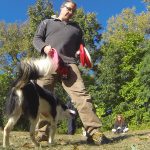 A Through is a set up move where the dog runs between the handler’s legs. The dog can move from front to back or side to side and can even weave. A Through... More >> Flip>> Dog Catch
A Through is a set up move where the dog runs between the handler’s legs. The dog can move from front to back or side to side and can even weave. A Through... More >> Flip>> Dog Catch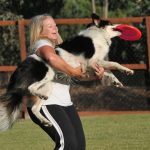 A Dog Catch is a great trick to use for hitting the crowd or for putting a strategic pause in your routine. The dog leaps to catch the disc and then you catch... More (or Stall
A Dog Catch is a great trick to use for hitting the crowd or for putting a strategic pause in your routine. The dog leaps to catch the disc and then you catch... More (or Stall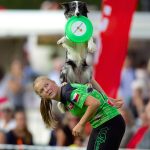 A Stall has the dog leaping up and chilling out on the handler’s back. Stalls are great for showmanship and for presenting a dog to the crowd. They create a dramatic or emotive... More) — and be sure to wave to the crowd and ask them to give it up for your awesome dog.
A Stall has the dog leaping up and chilling out on the handler’s back. Stalls are great for showmanship and for presenting a dog to the crowd. They create a dramatic or emotive... More) — and be sure to wave to the crowd and ask them to give it up for your awesome dog.
Put your dog down and take a breather. That’s some hard work.
Start with the second to the last sequence, and when you finish that, just drop right into your Through >> Flip>> Dog Catch (or Stall) finish — don’t forget to acknowledge the crowd. Odds are you just rocked the finish of your routine, fresh and perky, not wore down, panting and dragging yourself around the field, as often happens when dialing in a routine.
Take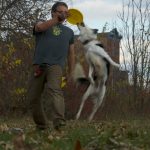 A Take is a cued Bite that replicates the placement and timing of a throw. Usually used with overs, vaults, and flips, the Take is a powerful teaching tool for creating habitual leaping... More a break. You guys deserve it.
A Take is a cued Bite that replicates the placement and timing of a throw. Usually used with overs, vaults, and flips, the Take is a powerful teaching tool for creating habitual leaping... More a break. You guys deserve it.
Start with the third to the last sequence and move into the second to the last, and you and your dog should start to feel deja vu, like you’ve done this before, and you have. This feeling will only get stronger the more sequences you add in front of the Dog Catch (or Stall) finish. It is almost like you can predict the future, you just know where things are going to be and how they are going to go down — you’ve done it 4 times now. You know where the discs are going to be and where the dog is going to be coming from. The end of a routine which was once super complex and difficult becomes simple and matter of fact.
Work Off the Cued Drop
Work off the cued Drop after any mistake or break in the action. You can toss a disc out there to manufacture the proper approach after a reset or mistake. It’s not a big deal.
Working off the cued Drop, skillfully done, can take a major error and smooth it over as if it never happened, and can get the ball rolling in the right direction from a successful start. It’s a tremendous way to reinforce the cued Drop and to efficiently recover from mistakes and control the ebb and flow of a training session.
Abbreviating Sequences
Any sequences can be abbreviated. I only did one of the 3 Repeating Rear Crosses from our routine to save energy — it’s a lot of work to move around like that. Loot was kind of gassed.
The Loot the World sequence, the Around the World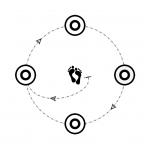 An Around the World is a disc dog flatwork pattern consisting of 4 catches in a circular pattern around the handler. This pattern is typically larger than 5 yards and often features creative... More in the video above, is highly taxing on both Loot and I. I will be abbreviating it to one or two throws on perhaps every other repetition.
An Around the World is a disc dog flatwork pattern consisting of 4 catches in a circular pattern around the handler. This pattern is typically larger than 5 yards and often features creative... More in the video above, is highly taxing on both Loot and I. I will be abbreviating it to one or two throws on perhaps every other repetition.
Abbreviating sequences can be smart and effective training.





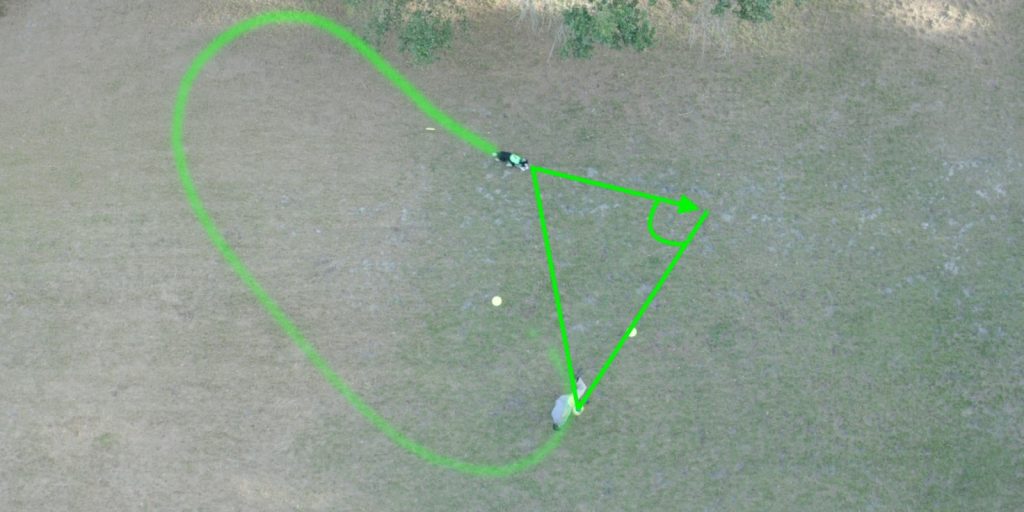
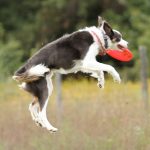


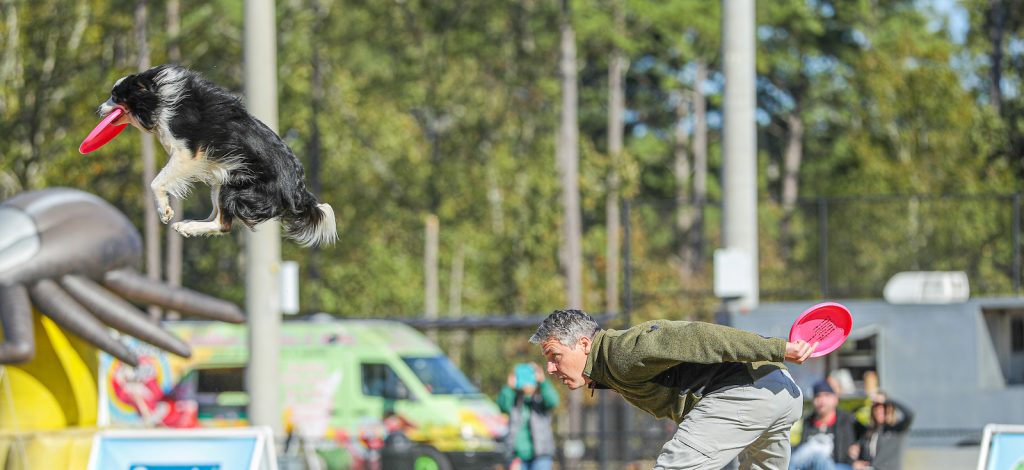
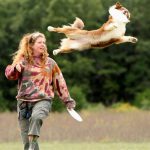
Responses